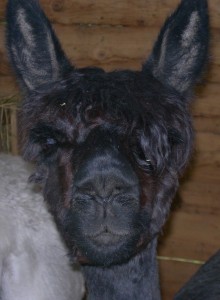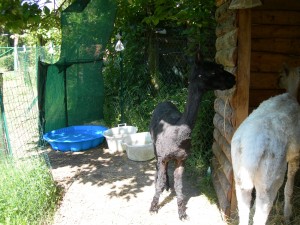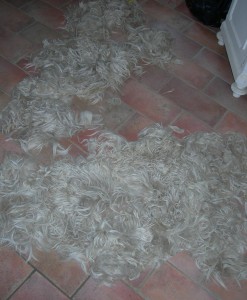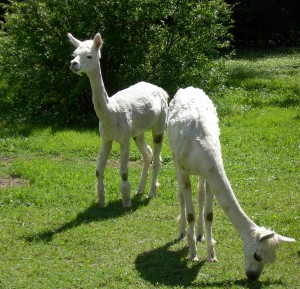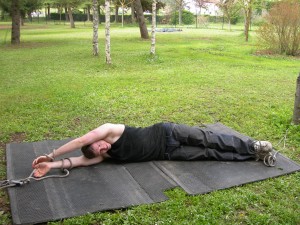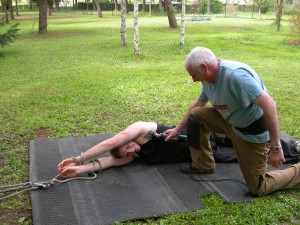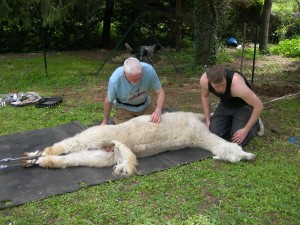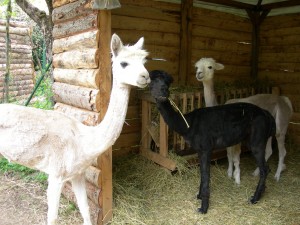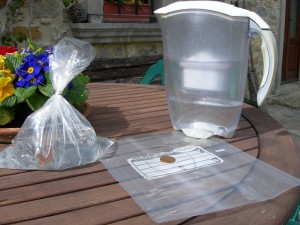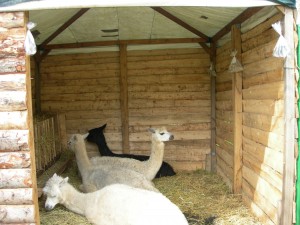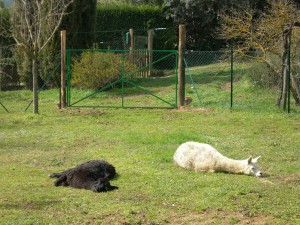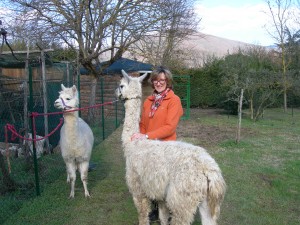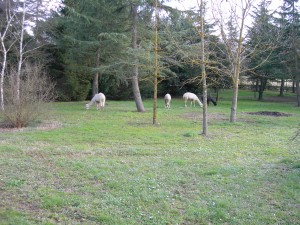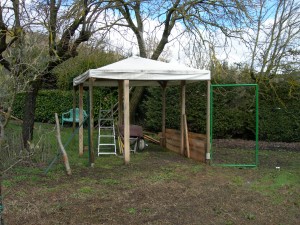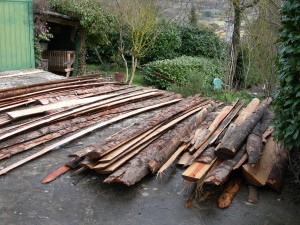The alpacas are learning to trust me more. They know I’m the one that brings them apples and carrots, alfafa hay and Camelibra. What’s not to like? But I can’t say we have really got that close yet. They prefer to avoid physical contact, which rather disappoints the local children who want to cuddle these big-eyed soft bodied creatures. One little boy managed to pat Diana’s tail and you would think he had climbed the Matterhorn!
So I have kind of got used to the fact that there are no strokes or tickles. I move them out of the way when I’m feeding them and they lean against me like I am another alpaca, but that is about it.
Imagine my surprise and awe then, when I was cleaning out their stable the other day. Bent down and intent on my task, I was raking away when I felt a soft nose on the top of my head. I stood stock still, not daring to look up or move as the nose pressed gently all over my hair and I felt warm breath on the back of my neck. It was Nicola, the cute little black one that everyone loves, who had decided that I was finally worth investigating.
It sounds so small a thing to happen, but after standing there being touched on the head by an alpaca nose for almost a minute, I felt quite elated, like I had made a bonding breakthrough.
I know she may have thought my hair was hay and that is what flashed through my mind, but there was no attempt to nibble or bite, just this soft pressing sensation. It was lovely!
UPDATE: What’s better than a sniff of my hair? A kiss. Nicola kissed my cheek last night!
Gli alpaca iniziano a fidarsi di me. Hanno imparato che sono io a portare le mele e le carote, il fieno di erba medica e il Camelibra. Come si fa a non amarmi? Ma in generale preferiscono evitare il contatto fisico, perciò devo abituarmi al fatto che carezze e solletico sono fuori questione. Può capitare che io debba spostarli mentre li sto nutrendo e che loro si appoggino contro di me, ma questo è tutto.
Quindi immaginate la mia sorpresa quando l’altro giorno stavo pulendo la stalla. Erochinata a rastrellare il pavimento quando all’improvviso ho sentito una leggera pressione sulla testa. Sono rimasta immobile, senza osare guardare in alto o muovermi, mentre un naso premeva gentilemente sui miei capelli e sentivo il respiro caldo dietro al collo. Era Nicola, il piccoletto nero e simpatico amato da tutti, che aveva finalmente deciso che ero degna della sua attenzione.
Può sembrare una questione di poca importanza, ma dopo essere rimasta lì per quasi un minuto mentre un alpaca mi toccava la testa, mi sentivo piuttosto euforica, avevo l’impressione di aver finalmente legato.
So che magari Nicola poteva semplicemente pensare che i miei capelli fossero paglia, ed è questo che mi è venuto in mente prima di tutto, però non c’è stato nessun tentativo di mordere. Solo questa piacevole pressione. E’ stato molto bello!
Aggiornamento: cosa c’è di meglio che un’annusatina di capelli? Un bacio. Nicola mi ha baciato sulla guancia ieri sera!
